Lake Bled, which is situated in northwest Slovenia at the foot of the Julian Alps, is one of Slovenia’s most picturesque natural wonders. The mineral-rich emerald green waters surround a small island with a baroque church and café specializing in the art of potica baking. 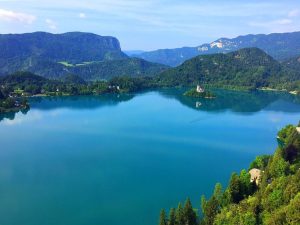
After a twisty ride up and over Vršič Pass, we reached the waterfront where we boarded a small, motorless, wooden boat called a pletna, rowed by a local. We admired the lake’s unmeasurable beauty and tranquility. Once we arrived at the island about 10 minutes later, we ascended 99 steps to the café to bake our very own poticas. A local woman taught us how to make the traditional Slovenian dessert by first showing us the steps in the process and then setting us free and helping out us when needed.
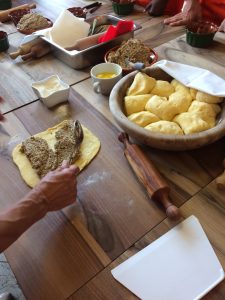
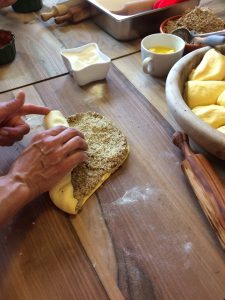 First, we each floured a space on the wooden table, took a pre-portioned piece of dough, and formed it into a rectangular shape. We then rolled it out thin with a rolling pin until the proper size and thickness was reached. Next, we took a few heaping spoonfuls of walnut filling and spread it evenly on the dough. Then, we sprinkled finely chopped walnuts on top and attempted to roll the dough and filling as perfectly as our instructor had.
First, we each floured a space on the wooden table, took a pre-portioned piece of dough, and formed it into a rectangular shape. We then rolled it out thin with a rolling pin until the proper size and thickness was reached. Next, we took a few heaping spoonfuls of walnut filling and spread it evenly on the dough. Then, we sprinkled finely chopped walnuts on top and attempted to roll the dough and filling as perfectly as our instructor had.
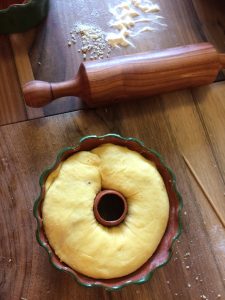 Somehow, mine stayed together and ended up fitting inside the mold. But if the rolls were too long, the extra length was sliced off made into little potica cookies. Before placing the rolled dough inside the mold, we spread a generous amount of melted butter inside to prevent the potica from sticking.
Somehow, mine stayed together and ended up fitting inside the mold. But if the rolls were too long, the extra length was sliced off made into little potica cookies. Before placing the rolled dough inside the mold, we spread a generous amount of melted butter inside to prevent the potica from sticking. 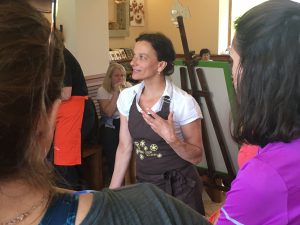 We then gently placed the dough into the mold and punched a few holes into it before it was put in the oven.
We then gently placed the dough into the mold and punched a few holes into it before it was put in the oven.
While we waited for our potica, each of us was offered a refreshing glass of elderflower water with a walnut and tarragon potica sample. The walnut version, which is the most common, was slightly sweet and seemed to be the favorite out of the two. The savory tarragon slice was a bit unusual, but good in its own way. Next, we then walked to the church, toured the interior, and we each rang the bell and made a silent wish. Before long, the church was swarming with tourists so we exited the building and walked near the water, admiring the lake’s beauty and hoping to spot a swan.
 About an hour later, our miniature poticas were ready. They tasted incredibly delicious and paired perfectly with a latte, conveniently available at the café inside the store. Now that we each have our own mold, we can share this traditional dish with our family and friends. Maybe one of us will get around to baking every one of the 80 varieties!
About an hour later, our miniature poticas were ready. They tasted incredibly delicious and paired perfectly with a latte, conveniently available at the café inside the store. Now that we each have our own mold, we can share this traditional dish with our family and friends. Maybe one of us will get around to baking every one of the 80 varieties!
-Jolee
Jolee Keplinger, a sophomore, is majoring in mass communication with a minor in sustainability. Her hobbies include blogging, cooking, and anything involving art. She’s known as a foodie so it’s no surprise that her cultural presentation topic is Slovene cuisine.

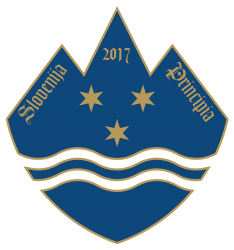


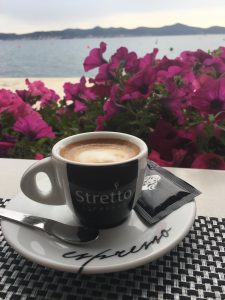
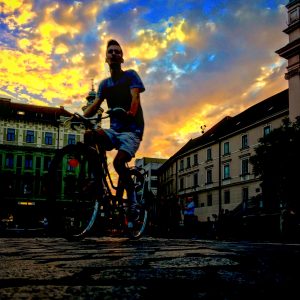
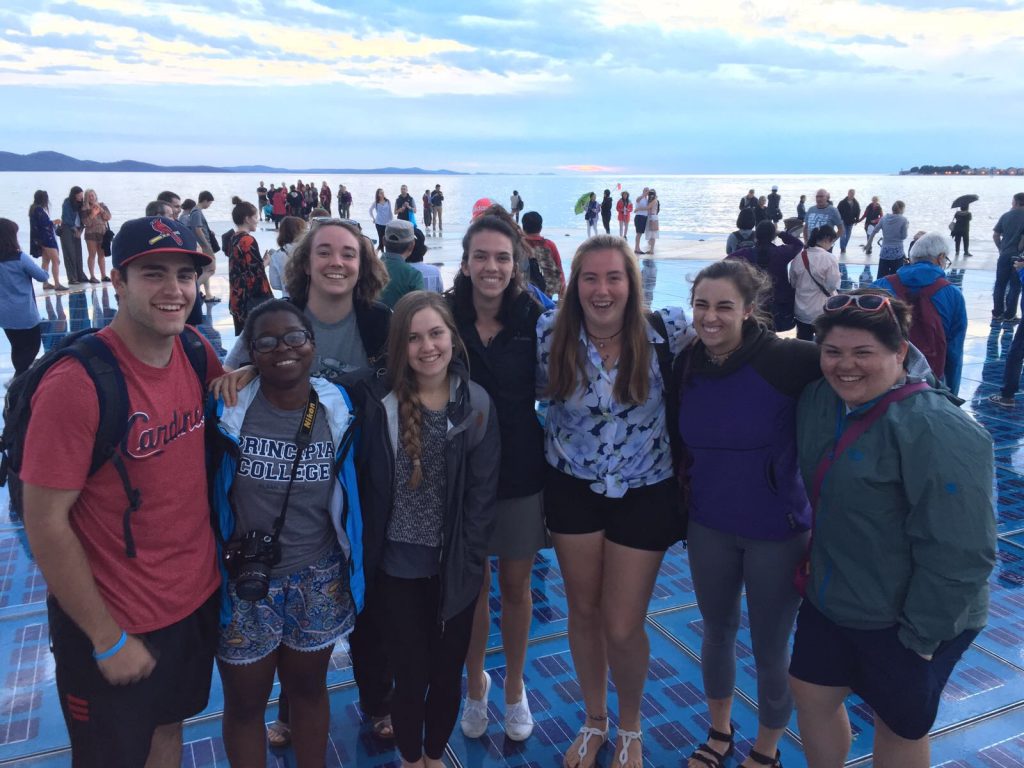 As a group, we learned to ask the right questions to find the lesser-known treasures in each place that we visited. We navigated local markets, fought over who found the most delicious (and best priced) gelato, and talked to locals to learn about how much they loved their corner of the world. While our class in the spring gave us a background understanding of Slovenia and its culture, it was only through our in-country explorations that we developed a true understanding of what it means to be Slovenian.
As a group, we learned to ask the right questions to find the lesser-known treasures in each place that we visited. We navigated local markets, fought over who found the most delicious (and best priced) gelato, and talked to locals to learn about how much they loved their corner of the world. While our class in the spring gave us a background understanding of Slovenia and its culture, it was only through our in-country explorations that we developed a true understanding of what it means to be Slovenian.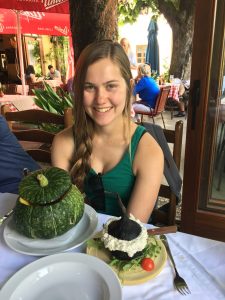
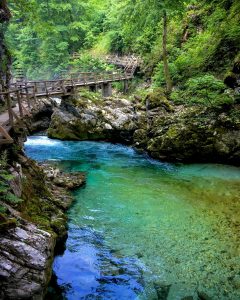
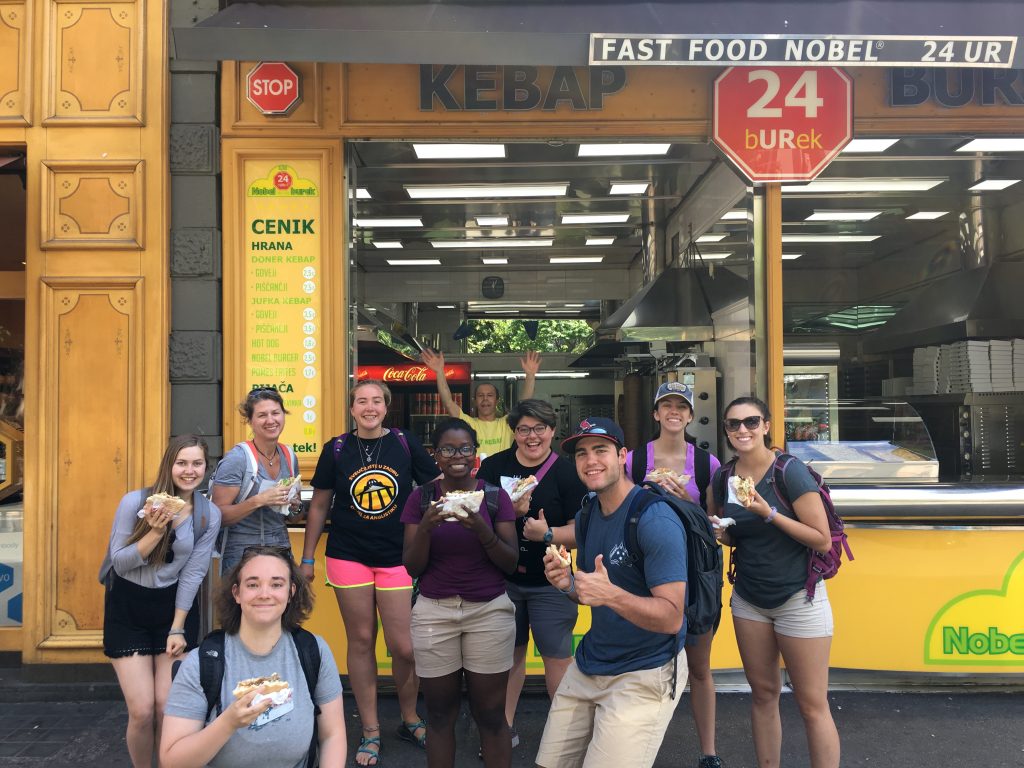

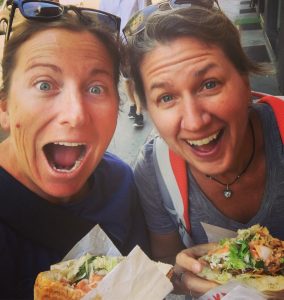
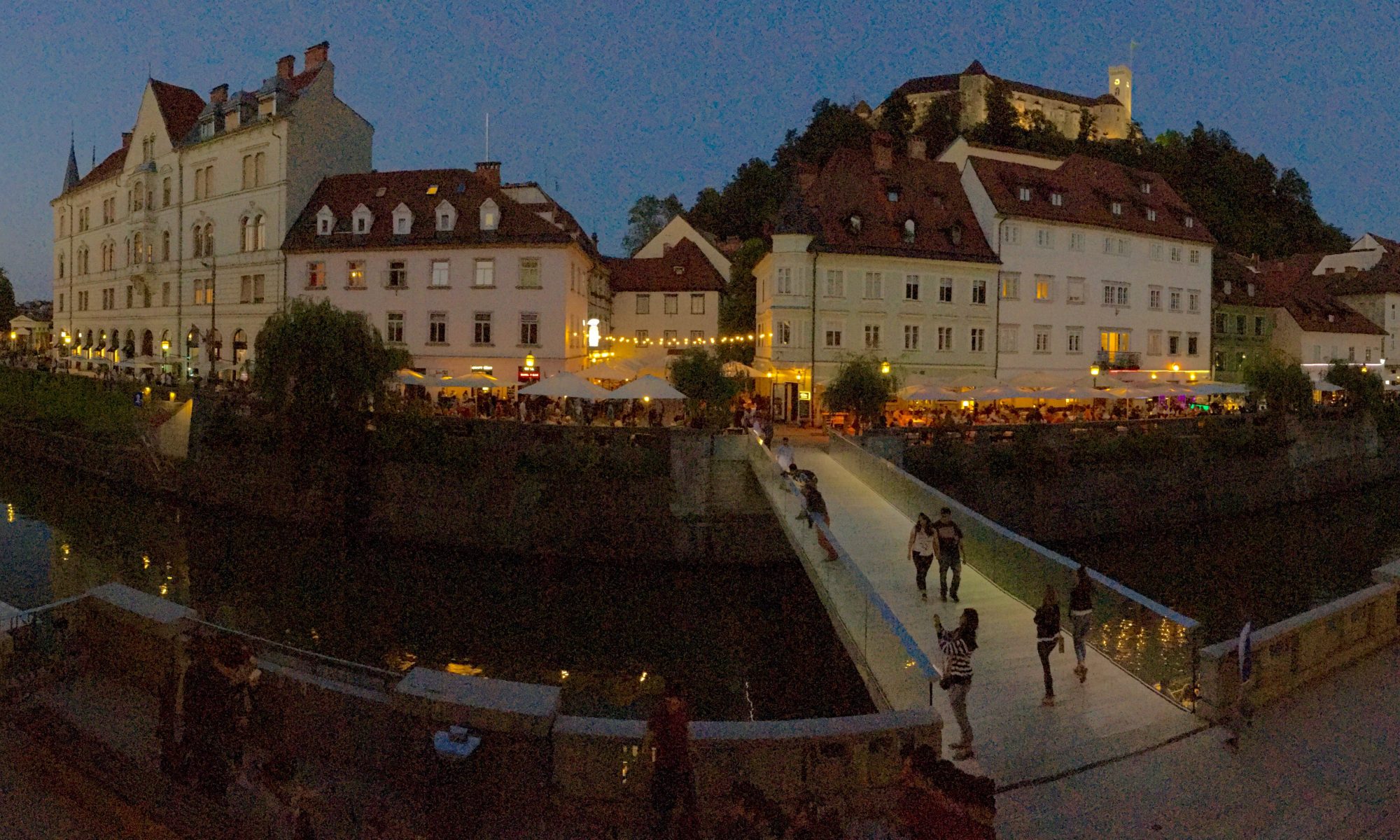
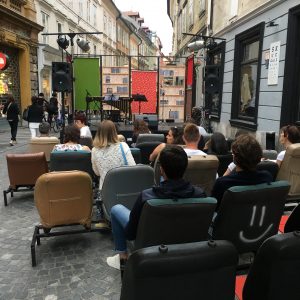 the entire scene. All the while the locals on their bicycles weave professionally through the walkers, the millers, the restaurant and shop patrons, and they do so with deft skill and seeming ease.
the entire scene. All the while the locals on their bicycles weave professionally through the walkers, the millers, the restaurant and shop patrons, and they do so with deft skill and seeming ease. by. Not your usual buskers for sure, but they pulled together quite the showing! Her voice was awesome, but in combination with the instruments of choice, it was just so pleasing to the ear.
by. Not your usual buskers for sure, but they pulled together quite the showing! Her voice was awesome, but in combination with the instruments of choice, it was just so pleasing to the ear.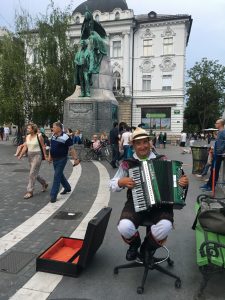 traditional sound here, it still makes me smile and impresses me to the core. Having tried my hand at it for about five minutes two weeks ago, it made patting my head and rubbing my belly seem like child’s play. Two hands acting in complete independence with one’s arms also doing their own thing… How does the brain manage?! Plus he finds the time to smile!
traditional sound here, it still makes me smile and impresses me to the core. Having tried my hand at it for about five minutes two weeks ago, it made patting my head and rubbing my belly seem like child’s play. Two hands acting in complete independence with one’s arms also doing their own thing… How does the brain manage?! Plus he finds the time to smile! 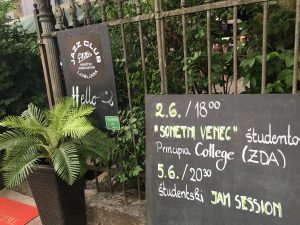 poets shared their sonnets. In order to form a wreath, the last line of each sonnet has to then be the first line of the next sonnet. This requires a beautiful use of the English language to describe an idea that is a conclusion for one thought while simultaneously serving as a leaping off point for the next. The final sonnet also follows suit using the first line from the initial sonnet as its conclusion. This truly creates a circle, also known as a “heroic crown,” thus allowing a reader to theoretically start at any point. The first time I heard it, I cried. Literally. They were amazing. And tonight was even better. Maturity, grace, poise, intelligence and strength as the Principia students demonstrated their love for their new home, overflowing.
poets shared their sonnets. In order to form a wreath, the last line of each sonnet has to then be the first line of the next sonnet. This requires a beautiful use of the English language to describe an idea that is a conclusion for one thought while simultaneously serving as a leaping off point for the next. The final sonnet also follows suit using the first line from the initial sonnet as its conclusion. This truly creates a circle, also known as a “heroic crown,” thus allowing a reader to theoretically start at any point. The first time I heard it, I cried. Literally. They were amazing. And tonight was even better. Maturity, grace, poise, intelligence and strength as the Principia students demonstrated their love for their new home, overflowing. 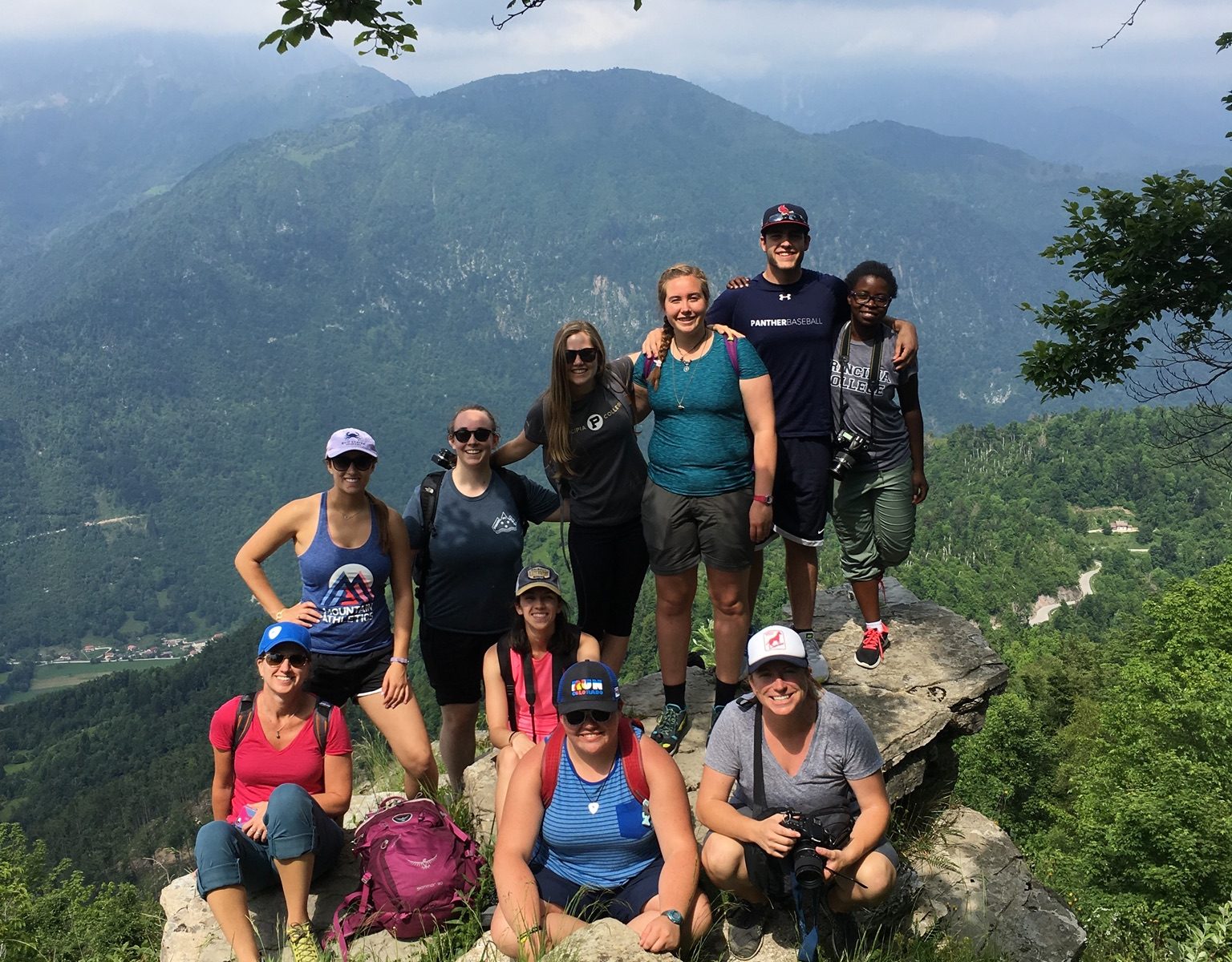
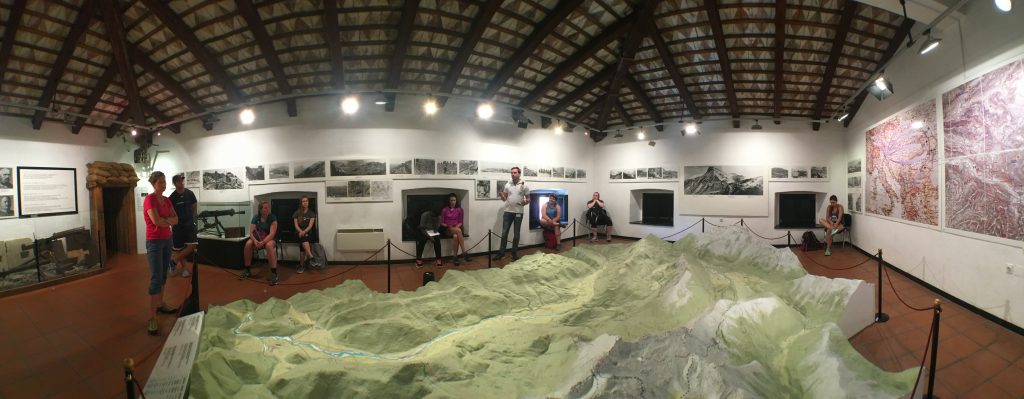
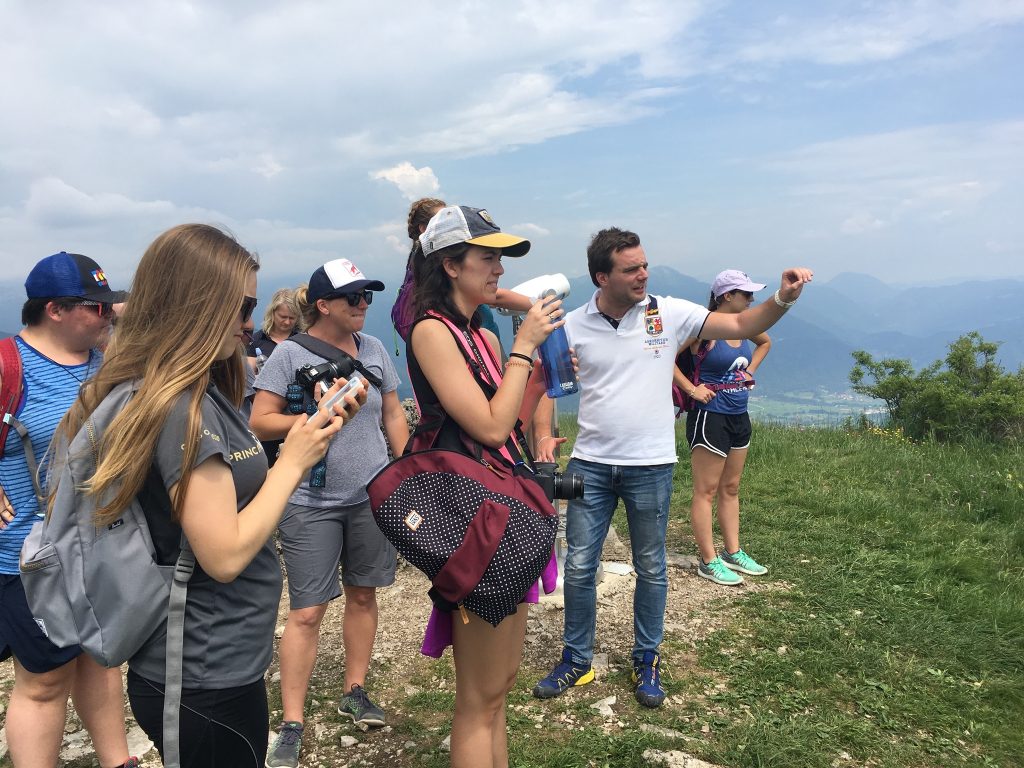
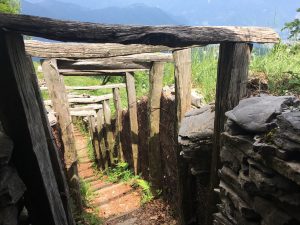
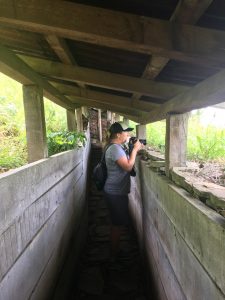
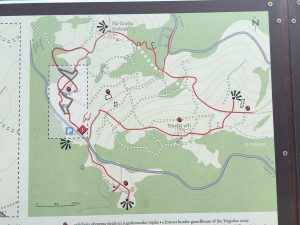 Yet, who knows if Slovenia would be its own nation today if history hadn’t played out the way it did? I cannot say, but I do know that I felt honored to walk along the Walk of Peace, leaving with the mountains and a little more peace in my own heart.
Yet, who knows if Slovenia would be its own nation today if history hadn’t played out the way it did? I cannot say, but I do know that I felt honored to walk along the Walk of Peace, leaving with the mountains and a little more peace in my own heart.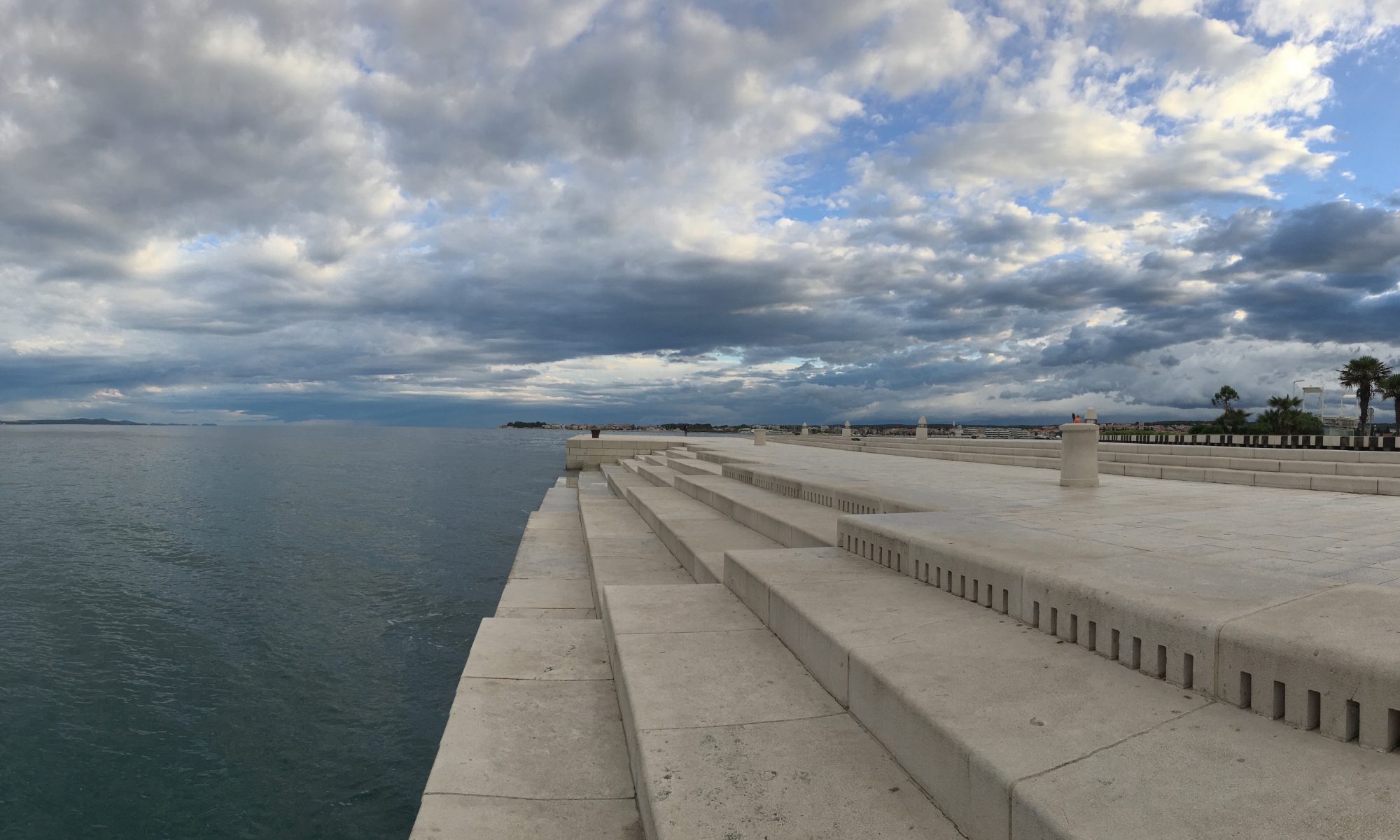
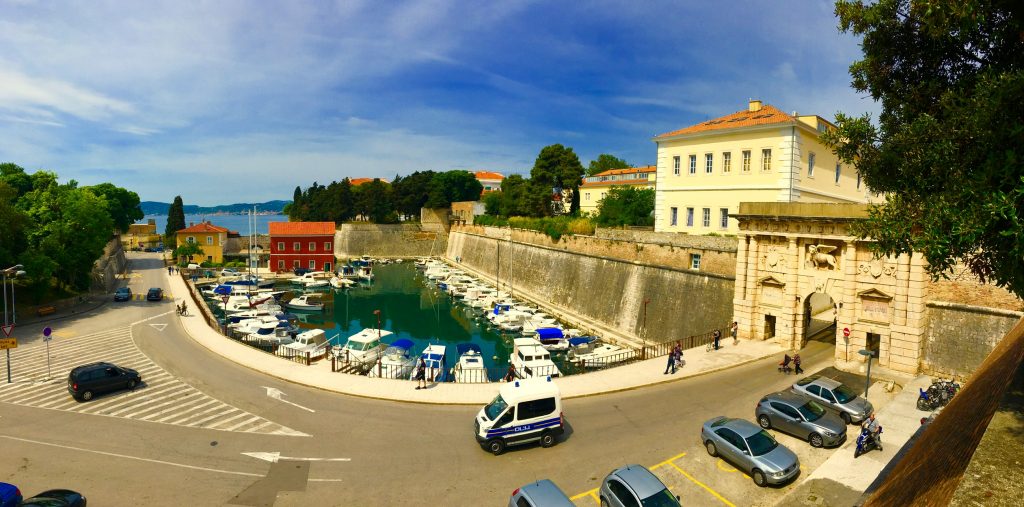

 As a joint class we discussed the novel from our two different perspectives. We talked about why we thought the novel has been chosen to be republished by Amazon Crossing (Amazon’s translation branch) and what themes made it attractive to a global audience. We discussed the themes of hopping between time periods, war, and forbidden love, and how these would be attractive to readers on the global market. One local student voiced her opinion that she was tired of the Croatia constantly being connected to war in their literature because she feels it does not accurately reflect the current state of of the country.
As a joint class we discussed the novel from our two different perspectives. We talked about why we thought the novel has been chosen to be republished by Amazon Crossing (Amazon’s translation branch) and what themes made it attractive to a global audience. We discussed the themes of hopping between time periods, war, and forbidden love, and how these would be attractive to readers on the global market. One local student voiced her opinion that she was tired of the Croatia constantly being connected to war in their literature because she feels it does not accurately reflect the current state of of the country.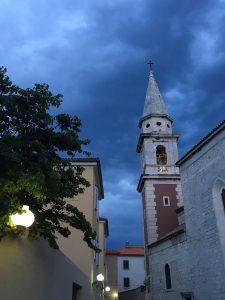 In the end, it was a great discussion with a lot learned on both sides. It was exciting to talk about the book with other students with a completely different view on the topic, as well as one of the translators of the novel itself. Thank you for hopping back in time with me to a discussion about a novel that hops around in time.
In the end, it was a great discussion with a lot learned on both sides. It was exciting to talk about the book with other students with a completely different view on the topic, as well as one of the translators of the novel itself. Thank you for hopping back in time with me to a discussion about a novel that hops around in time.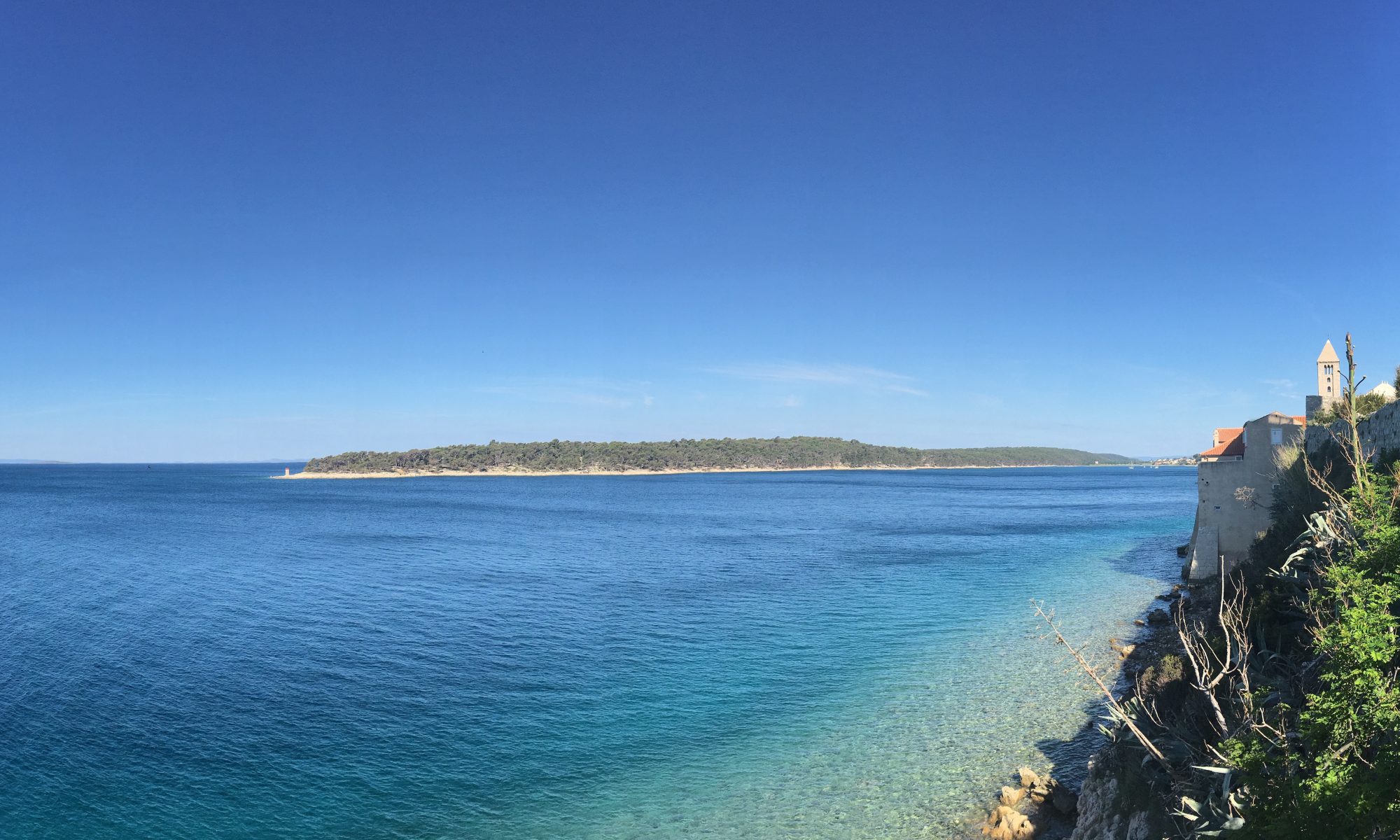
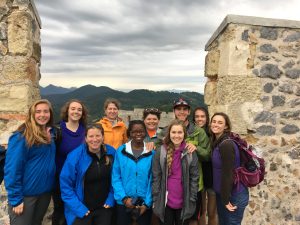 also continuing to learn myself. We talk about what it means to be a “global citizen,” and it would seem to me that one of the best ways to embody that would be to constantly be growing, learning, striving for more. Our classrooms here in Slovenia change by the day while the topics cover (but are definitely not limited to!) the Slovene language, world literature, culture and history of the area (huge topic!), and even salsa dancing.
also continuing to learn myself. We talk about what it means to be a “global citizen,” and it would seem to me that one of the best ways to embody that would be to constantly be growing, learning, striving for more. Our classrooms here in Slovenia change by the day while the topics cover (but are definitely not limited to!) the Slovene language, world literature, culture and history of the area (huge topic!), and even salsa dancing.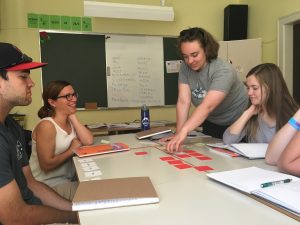 even ridden a bike. Having said that, our language class has been at the top of my list of favorite activities. Our teachers are incredible and, somehow, as if through magic, I’m actually learning! My little class of five with Anja as our teacher impresses me every time we meet.
even ridden a bike. Having said that, our language class has been at the top of my list of favorite activities. Our teachers are incredible and, somehow, as if through magic, I’m actually learning! My little class of five with Anja as our teacher impresses me every time we meet. lights are off and windows are open as the A/C does not seem to be used much in university classrooms. The local students seem as trepidatious and unsure of us as our students are of them–yet when grouped together, the talking becomes deafening with sharing of thoughts, ideas, similarities, and laughter. A true joy emanates from the professors when they see the human connection being made.
lights are off and windows are open as the A/C does not seem to be used much in university classrooms. The local students seem as trepidatious and unsure of us as our students are of them–yet when grouped together, the talking becomes deafening with sharing of thoughts, ideas, similarities, and laughter. A true joy emanates from the professors when they see the human connection being made.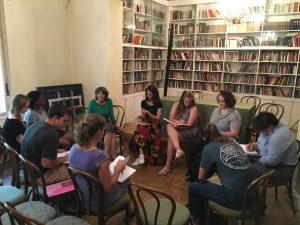 whole but also into the niche world of Slovene translation. With references to translation of TV shows, Harry Potter, John Grisham and, of all challenges, Dr. Seuss, we ventured off to get a better look for ourselves at the biggest book store in Ljubljana. What we all could agree on was how wonderful it would be to be able to speak another language so completely.
whole but also into the niche world of Slovene translation. With references to translation of TV shows, Harry Potter, John Grisham and, of all challenges, Dr. Seuss, we ventured off to get a better look for ourselves at the biggest book store in Ljubljana. What we all could agree on was how wonderful it would be to be able to speak another language so completely. and people we’ve seen. Talking about appreciating what we’re doing, who we’re talking to, and journaling about it all will aid in ensuring that it sticks with us long past our return to the States.
and people we’ve seen. Talking about appreciating what we’re doing, who we’re talking to, and journaling about it all will aid in ensuring that it sticks with us long past our return to the States.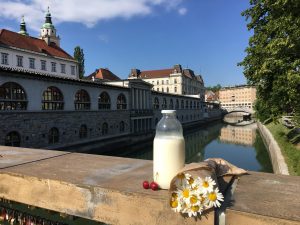 American cultural references to further explain something. With the city and personal interactions as our greatest teachers of all, it has been a delight to watch the students become more and more comfortable with being uncomfortable and with that, become truly comfortable. Buying cherries at the Saturday morning market and figuring out the milk dispenser in Ljubljana, having to speak with people in Croatia who don’t speak any English (while we speak no Croatian), or simply trying new foods without hesitation, these all add to the wonderfulness that traveling has to offer.
American cultural references to further explain something. With the city and personal interactions as our greatest teachers of all, it has been a delight to watch the students become more and more comfortable with being uncomfortable and with that, become truly comfortable. Buying cherries at the Saturday morning market and figuring out the milk dispenser in Ljubljana, having to speak with people in Croatia who don’t speak any English (while we speak no Croatian), or simply trying new foods without hesitation, these all add to the wonderfulness that traveling has to offer.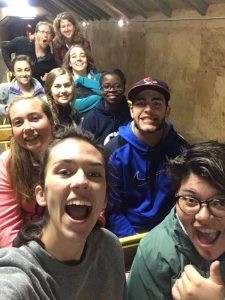
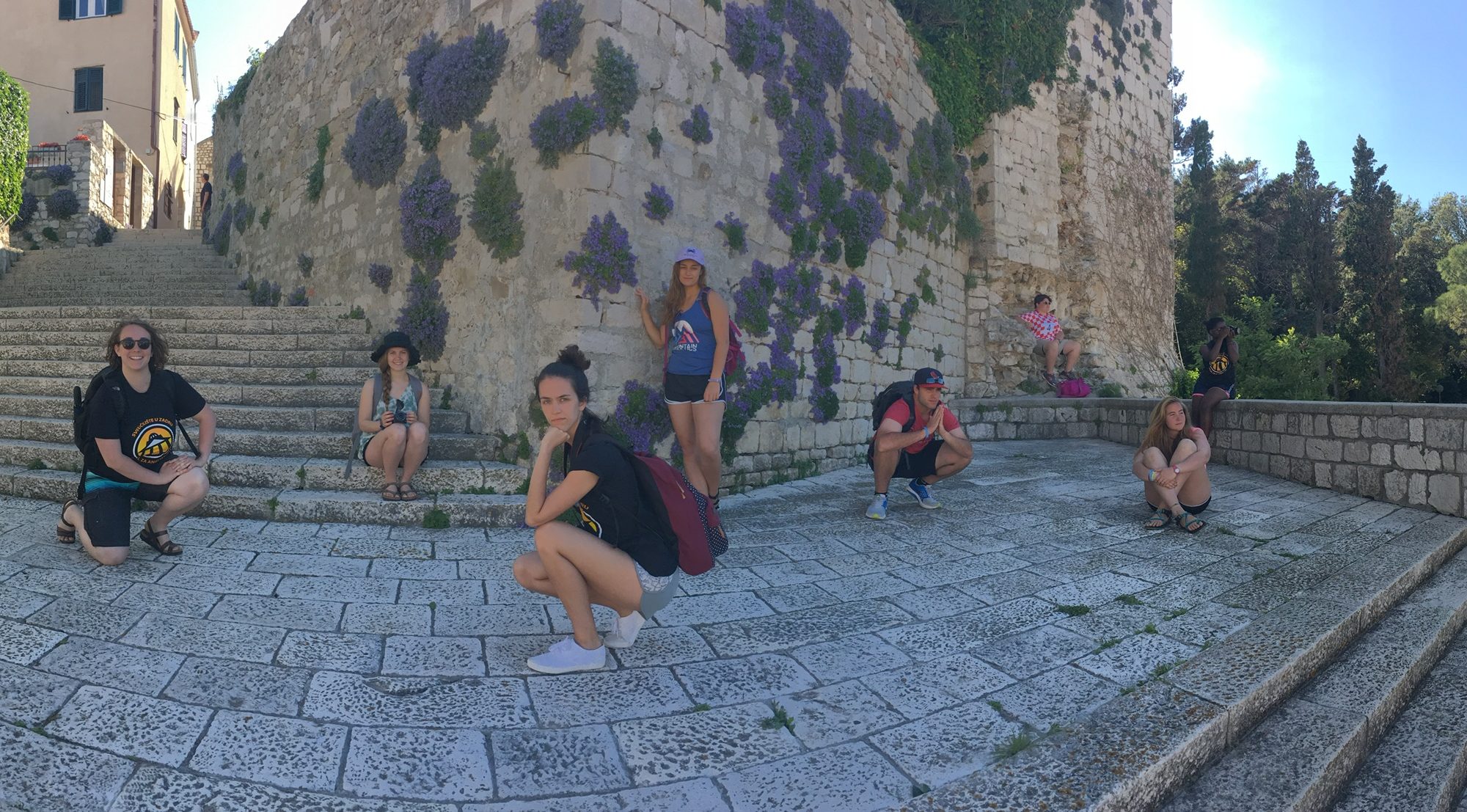

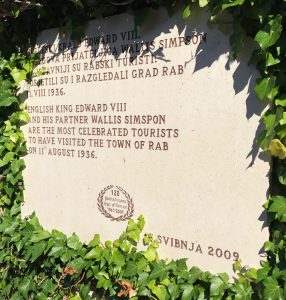
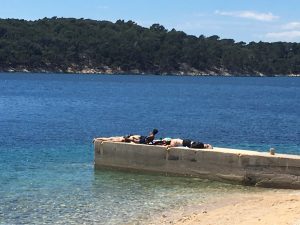

 Ifigenija Simonović is a modernist poet, no rhymes no rules, as well as the president of the Slovene branch of PEN, an organization that defends the rights of writers worldwide. You might say it’s like amnesty international but for poets, essayists, novelists, and writers of all kinds. She encouraged us to gather the chairs in the cozy lecture hall of the Slovene Writers Association into a big circle. It made us feel more comfortable with asking questions as she took us through a wandering chat about everything from Slovene literary history to the rash of foreign coloring books that have swept through the nation just as forcefully as in the United States.
Ifigenija Simonović is a modernist poet, no rhymes no rules, as well as the president of the Slovene branch of PEN, an organization that defends the rights of writers worldwide. You might say it’s like amnesty international but for poets, essayists, novelists, and writers of all kinds. She encouraged us to gather the chairs in the cozy lecture hall of the Slovene Writers Association into a big circle. It made us feel more comfortable with asking questions as she took us through a wandering chat about everything from Slovene literary history to the rash of foreign coloring books that have swept through the nation just as forcefully as in the United States. 
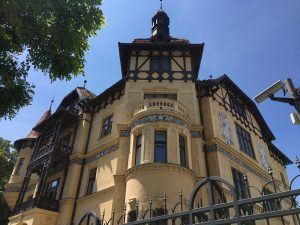 Speaking of the States, we can’t help showing a picture of the U.S. Embassy, a neighbor to the Slovene Writers’ Association.
Speaking of the States, we can’t help showing a picture of the U.S. Embassy, a neighbor to the Slovene Writers’ Association.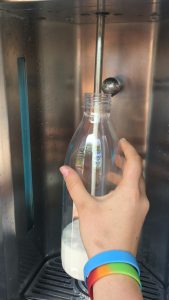 minutes might be a little less normal. Sophia and I bought a jar from a vending machine and watched the clear bottle fill with the heavenly, silky milk. Why there weren’t lines for it, I do not know. But daily fresh milk that is cold and so smooth? I can promise you, we’ll be back!
minutes might be a little less normal. Sophia and I bought a jar from a vending machine and watched the clear bottle fill with the heavenly, silky milk. Why there weren’t lines for it, I do not know. But daily fresh milk that is cold and so smooth? I can promise you, we’ll be back! She allowed us to try “young cheese” as she called it followed by a deliciously salty “older cheese.” She laughed with us when we asked her to repeat the name “older cheese” as it seemed a somewhat insufficient name for a cheese. Sophia and I agreed we would be back next week for some of that, providing we could find it.
She allowed us to try “young cheese” as she called it followed by a deliciously salty “older cheese.” She laughed with us when we asked her to repeat the name “older cheese” as it seemed a somewhat insufficient name for a cheese. Sophia and I agreed we would be back next week for some of that, providing we could find it.  teller because numbers are hard), I decided to pop into the bookstore across the street. People had said Ljubljana is a small city, but I had
teller because numbers are hard), I decided to pop into the bookstore across the street. People had said Ljubljana is a small city, but I had the only dog whose view changes is the lead dog. This can lead to not 100% remembering where you’re going if you’re always bringing up the rear. Fortunately, despite not having seen many policemen previously, when I officially wasn’t sure where to go, I stumbled upon a car of three of them. They motioned haphazardly behind them and told me in Slovene where to go. I’m so grateful for the timing of our meeting or I may still be out wandering trying to find the group again…
the only dog whose view changes is the lead dog. This can lead to not 100% remembering where you’re going if you’re always bringing up the rear. Fortunately, despite not having seen many policemen previously, when I officially wasn’t sure where to go, I stumbled upon a car of three of them. They motioned haphazardly behind them and told me in Slovene where to go. I’m so grateful for the timing of our meeting or I may still be out wandering trying to find the group again…